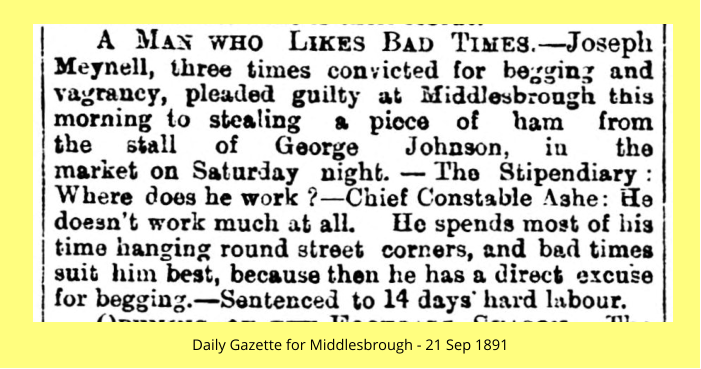George Johnson appears to have been an
ambitious and hard-working man who
progressed from low beginnings to own a
number of shops.
From the newspaper cutting on the right it
appears he may also have had a stall on
Stockton Market at some time.
Stockton began as an Anglo-Saxon settlement on high ground close to the northern bank of the River Tees.
Stockton was described as a manor by 1138, and was purchased by Bishop Pudsey of Durham in 1189. During the 13th century, the bishop changed the village
of Stockton into a borough. When the bishop freed Stockton's serfs, craftsmen moved to the new town. The bishop had a residence in Stockton Castle, which was
a fortified manor house, the first recorded reference to which was in 1376.
Stockton's market traces its history to 1310, when Bishop Bek of Durham granted a market charter to our town of Stockton a market upon every Wednesday for
ever. The town grew into a small but busy port, exporting wool and importing wine, which was in demand by the upper class. However, even by the standards of
the time, medieval Stockton-on-Tees was a small town, with a population of only approximately 1,000, and the town did not grow for centuries. By the end of the
19th Century Stockton High Street, reputedly the widest in the UK, was host to a thriving market until its decline in the latter half of the twentieth century.
Shipbuilding, which had started in the 15th century, prospered in the town through the 17th and 18th centuries, with smaller-scale industries also developing.
These included brick, sail, and rope making, the latter now reflected in road names such as Ropery Street in the town centre. Stockton became the major port for
County Durham, the North Riding of Yorkshire, and Westmorland during this period, exporting mainly rope, agricultural produce and lead from the Yorkshire
Dales. Iron making and engineering entered the local economy in the 18th century
The town grew rapidly as the Industrial Revolution started, the population grew from 10,000 in 1851 to over 50,000 in 1901 as workers moved in. The discovery
of iron ore in the Eston Hills resulted in blast furnaces lining the River Tees from Stockton to the river's mouth. In 1820, an Act set up the Commissioners, a body
with responsibility for lighting and cleaning the streets, and from 1822, Stockton-on-Tees was lit by gas.










